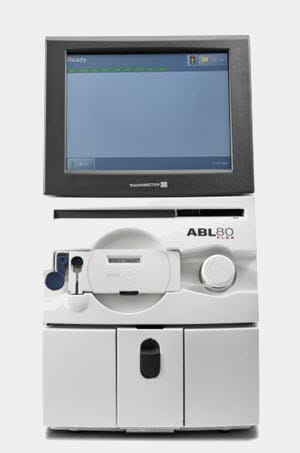Operator Manual Abl 80 Flex Radiometer America

Blood gas analysis technology continues to shorten the length of time between testing and results, thanks to improved technology and a focus on point-of-care devices. January 2014’s Market Analysis discusses blood gas analyzers, including product trends and new developments, the movement toward point-of-care blood gas testing, recommendations for RTs using these devices, and some of the latest blood gas analyzers on the market. Driver modem huawei e303 telkomsel flash settings for nikon lens.
Read: Abl80 Flex Reference Manual Radiometer America Inc[FREE EBOOKS] Abl80 Flex Reference Manual Radiometer America Inc [FREE] possess some digital formats such us: paperbook, ebook, kindle, epub, and another formats. Class 2 Device Recall Radiometer, ABL 80, ABL90, ABL 800 FLEX Blood Gas analyzers with AQURE Software version 2.2.0.
RT Magazine spoke with executives from two leading product manufacturers, including: • Alan Beder, senior product manager,; and • Bruce Lewis, marketing director, epoc Blood Analysis System,. RT: As technology and sensors have improved over the last 5 years, in general, what features and advantages do today’s blood gas analyzers have over previous generations? Alan Beder (Radiometer America): Radiometer analyzers automate many functions with the goal of streamlining and reducing errors throughout the entire analytical process. Starting in the preanalytical phase using the safePICO sampler, Radiometer analyzers can automatically identify, mix, and aspirate arterial blood gas samples, reducing user variability and the possibility of error.
Iqra qaida pdf. In addition to automation, Radiometer has dramatically shortened turnaround time with the ABL90 FLEX analyzer through use of a unique sensor array featuring a uniquely efficient sample path. The compact POC analyzer delivered results on 16 parameters in just 35 seconds. Bruce Lewis (Alere): Similar to other technologies, blood gas analyzers continue to progress toward a smaller platform with key features such as fully wireless communications and patient-side or bedside utilization characteristics. Having a system that can be used in any part of the patient care continuum, including the lab, ED, OR, all of the ICUs, step-down units, telemetry, transport, and the physician office market, is critical for continuity of care. Having a product that provides critical results in less than 3 minutes with minimal process steps maximizes outcomes and minimizes potential medical errors.
RT: What impact have point-of-care devices had on the market? What advantages do these analyzers offer to respiratory therapists? Beder: It has caused many managers to reevaluate how they deliver their blood service.
As hospitals are challenged to meet the requirements of the Affordable Care Act, they are discovering a hybrid model using a combination of benchtop and compact analyzers can result in greater workflow efficiency and cost savings. Lewis: Having results in three minutes instantaneously transmitted into EMR and the LIS (laboratory information system) will robustly improve the clinical, operational, and financial outcome of the institution.
All of this can be completed without ever leaving the patient’s side. The epoc test card does not require refrigeration and all of the analytes are on one card. The test card has been designed to be cost-effective and safe, as the bar coding is on the card and not the packaging. The system provides a “high tech and high touch” solution. RT: Tell us about your company’s most recent products, why they are innovative, and how they are meeting the needs of RTs. Beder: ABL80 FLEX OSM is Radiometer’s multitest, standalone CO-oximetry analyzer for the point of care. It provides high-quality CO-OX measurements in a compact platform with automatic quality control, full data integration, and a standby mode to help reduce consumable costs.
The analyzer’s small footprint, connectivity, and no need for sample prep make it ideal for the cardiac cath lab. ABL90 FLEX was introduced in 2010 and offers ease of use, portability, fast turnaround (16 parameters in 35 seconds), small sample size (65 microliters), and high throughput at 44 samples per hour. The analyzer’s small size, intuitive operation, and fast turnaround make it ideal for use even in high-volume applications such as busy EDs and ICUs. All Radiometer ABL analyzers may be configured as a 1st Automatic system. 1st Automatic is Radiometer’s solution for automating and simplifying blood sampling and data capture, from test order to reported results. 1st Automatic combines analyzers, samplers, and data management to ensure the right result for the right patient at the right time, while improving operator safety and sample integrity.